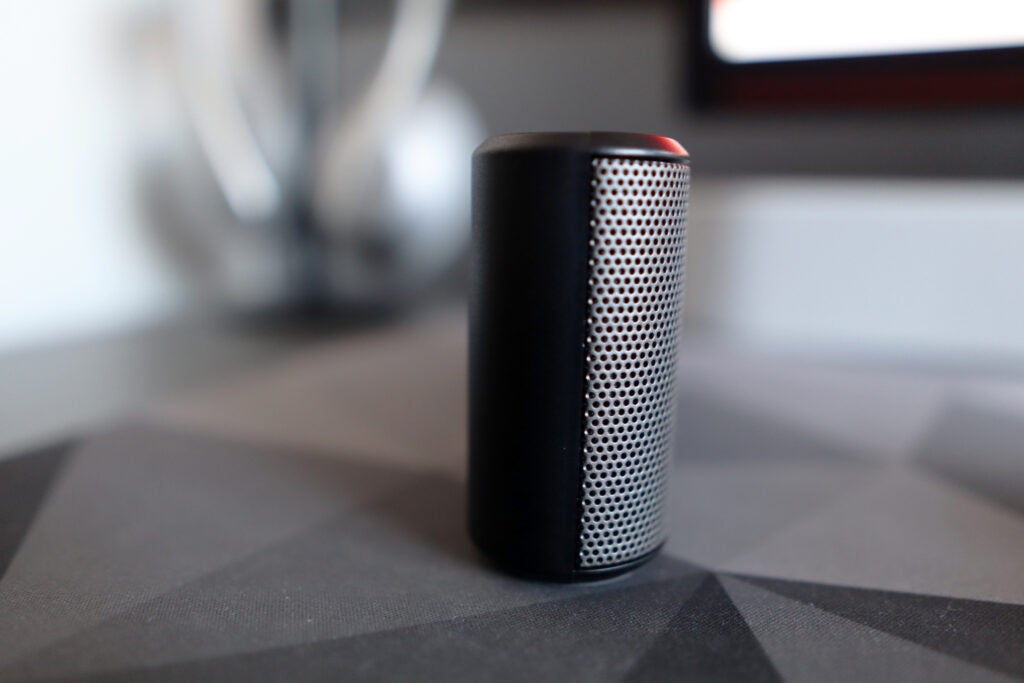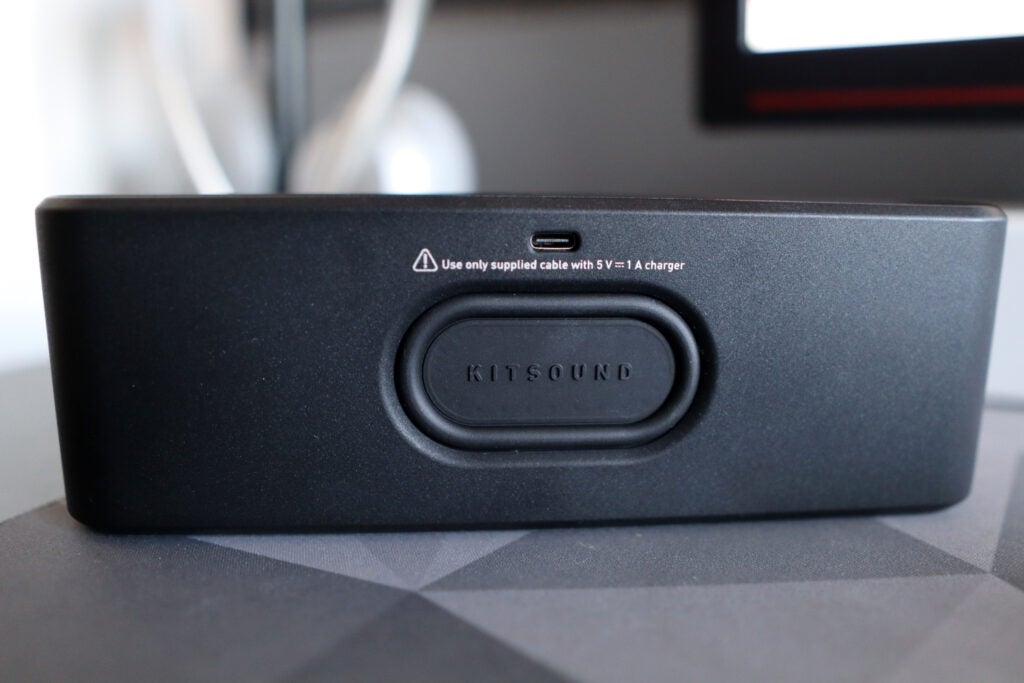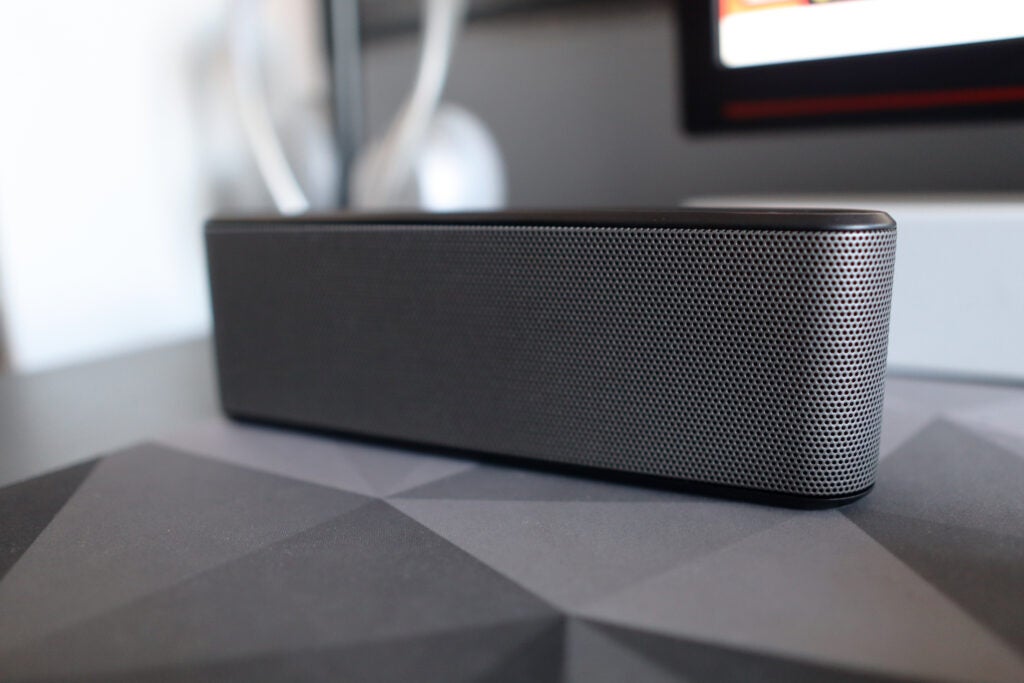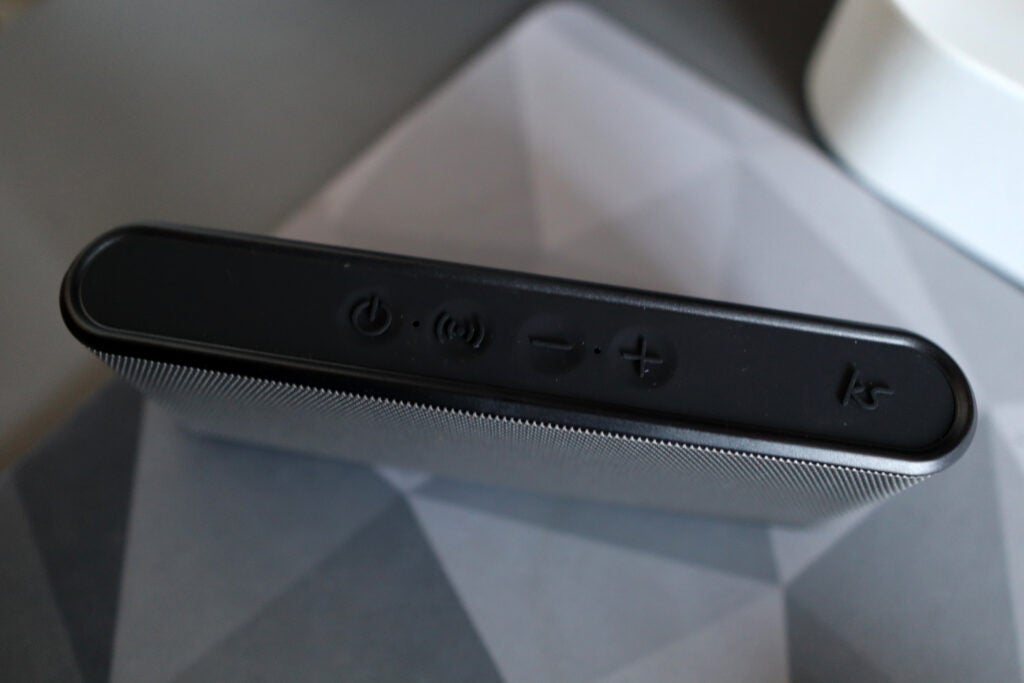KitSound Boombar 30 Review
A disappointing speaker, but it is at least affordable




Verdict
The KitSound Boombar 30 is a disappointing Bluetooth speaker. The audio is flat and lacks depth across the frequency range, with build quality that feels cheap. Its battery life is good, though, and it’s a decent looking speaker. Spending more will get you a much better package.
Pros
- Excellent battery life
- Good looks
- Convenient controls
Cons
- Flat audio
- Cheap feeling construction
Key Features
- 20 hours of battery life:Kitsound rates the Boombar 30 to offer up to 20 hours of battery life, which provides plenty of runtime.
- TrueBassEQ mode:It also has a dedicated EQ mode to add more bass to your music, if that’s what you’d prefer.
Introduction
The KitSound speakers this site has tested have been a mixed bag – an affordable price matched with lofty ambitions they haven’t always lived up to. Now the brand brings the Boombar 30 to our attention, another affordable Bluetooth speaker that’s more stylish than some of their previous efforts.
At £29.99 it’s one of the more cost-effective options in the market alongside KitSound’s own outdoor Diggit 55 speaker, and it sits beneath one of our favourites, the Tribit Stormbox Micro 2.
The Boombar 30 has much to do to make it onto our list of the best Bluetooth speakers. Here’s my opinion on whether it’s a value hero or a miss.
Design
- Hollow feeling chassis
- Tactile buttons
- Modern aesthetics
The Boombar 30 is one of the more conventional-looking speakers within its price band, opting for a long oval shape with flat surfaces on the front and back, which means it can be stood upright or laid flat. The black and gunmetal grey aesthetic carries the Boombar 30 well, to the point where it could pass for stylish. For a more gaudy look, a rose gold finished grille is also available.
Pick it up and you realise why it’s an affordable speaker. At 305g, it’s reasonably lightweight and its thinner chassis means it is quite portable, but I can’t help but feel that the Boombar 30 is quite hollow. The plastics used in its construction are coarse to the touch, although the mesh grille on the front feels marginally better.

On the top, the Boombar 30’s control surface is rubberised with four clearly-marked, large icons denoting power, pairing, and volume up and down. The buttons feel reasonably tactile with a satisfying click when pressed.

Otherwise, there isn’t too much else about the Boombar 30, apart from the small USB-C port for charging. The speaker’s base is rubberised and non-slip. It doesn’t move around too much on a table or desk, and it’s also reasonably stable when given a couple of pushes. This isn’t a speaker designed to be banded around of course, but it’s nice to know that the Boombar 30 won’t fall over at the drop of a hat.
Features
- Bluetooth 5.1 connectivity, but no multi-point
- Multi function buttons provide reasonable control
- Solid battery life
The Boombar 30 makes use of Bluetooth 5.1, which isperfectly fine for offering a reliable wireless connection with a range of up to 30m. Though I’ve not got 30m of space, to test this, I put the Boombar 30 at one end of my house and took my phone running Spotify to the other. The connection worked, passing through various walls without a hitch.
There isn’t any multi-point pairing with the Boombar 30, though. Pairing both my Samsung Galaxy S21 Ultra and the Honor Magic V2 at the same time didn’t work, as one phone would boot the other off.

The Boombar 30 also lacks app support, which is a shame. All its features are via the handful of buttons on top, which you can use for handling calls, as well as calling up a smart assistant provided your device supports one. With the Magic V2, it called up Google Assistant with a double tap of the power button without problem.
On the Boombar 30, the power button also doubles as a multi-function button for changing its EQ mode from its default to a bassier option. The Bluetooth pairing button can also be used to connect two Boombar 30s together as a stereo pair for a wider soundstage.

KitSound rates the battery life of the Boombar 30 as up to 20 hours. That’s more than comparatively priced options such as the Tribit Stormbox Micro 2, as well as more expensive speakers such as the Sonos Roam.
Sound Quality
- Narrow soundstage
- TrueBassEQ adds a semblance of depth
- Plenty of volume for a smaller unit
The Boombar 30 isn’t the most impressive sounding speaker, offering a flat and thin performance with its default EQ setting. Phil Collins’ cover of Blame It On The Sun lacked warmth, while the song’s cymbal hits and small drum fills felt compressed.
Rush’s YYZ is a notoriously busy and bass-heavy instrumental, and on the KitSound it sounded quite muddy. Without the TrueBass EQ mode enabled it lacked punch, feeling hollow where it ought to be more prominent.
Chic’s Good Times presented some energy, but the hand claps in the instrumental break were crunchy. The whole song lacked depth, especially Bernard Edward’s iconic bassline. The Boombar 30 didn’t handle busy recordings including the opening couple of minutes of Marillion’s The Invisible Man. Steve Hogarth’s vocals were pushed back in the mix and lacked the brooding quality I’ve come to expect from the song.

The TrueBass EQ mode helps the Boombar 30’s overall strength, increasing the richness of James Taylor’s Caroline I See You and adding a touch more depth. It isn’t as prominent as the speaker’s marketing would suggest, but it does make a difference. Without it, Boz Scaggs’ Lowdown sounded hollow.
Turning it on improves things to a degree with a stronger low end and a more rounded feel to the Boombar 30’s overall performance. Enabling TrueBassEQ requires three taps of the Boombar 30’s power button, and every time I switched between EQ presets, it made an annoyingly shrill bleeping tone that interrupts the music.
There also isn’t much in the way of soundstage with the Boombar 30. De La Soul’s Me Myself and I felt hemmed in and once again proved the KitSound’s lack of low end with the track’s booming bassline almost non-existent. In Earth Wind and Fire’s September, the recognisable bongos were lost in the mix and placed slightly right of centre.
On the plus side, the 10W of power provides a reasonable amount of volume, and the Boombar 30 had little trouble filling a room with sound. Turning the volume up too high adds distortion, though, so you’re best sticking to between 50 and 60 percent volume.
Latest deals
Should you buy it?
You want great battery life
Where the Boombar 30 competes with more expensive rivals is its battery life, which is some of the best out there for an affordable Bluetooth speaker.
You want captivating audio
The Boombar 30 falls short of expectations with flat audio that lacks depth. It’s not an energetic or fun-sounding speaker, and other options will get you much better quality for not much more.
Final Thoughts
When I first turned the KitSound Boombar 30 on, my initial thoughts were that it was going to be a decent Bluetooth speaker. However, even at its affordable price, it’sa disappointing speaker with a flat sound.
It feels cheap with it use of coarse plastics, but at at least offers stylish looks for the money and decent controls. The 20 hours of battery punches above its weight, but that’s the only place where the Boombar 30 does.
Spend more on the Tribit Stormbox Micro 2 gets you a better sound. For more options, check out our list of Trusted Reviews’ best Bluetooth speakers.
How we test
We test every wireless speaker we review thoroughly over an extended period of time. We use industry standard tests to compare features properly. We’ll always tell you what we find. We never, ever, accept money to review a product.
Find out more about how we test in our ethics policy.
Tested across two weeks
Tested with real world use
FAQs
No, unfortunately, the Boombar 30 doesn’t support multi-point Bluetooth. You can, however, pair two speakers together in a stereo pair.








